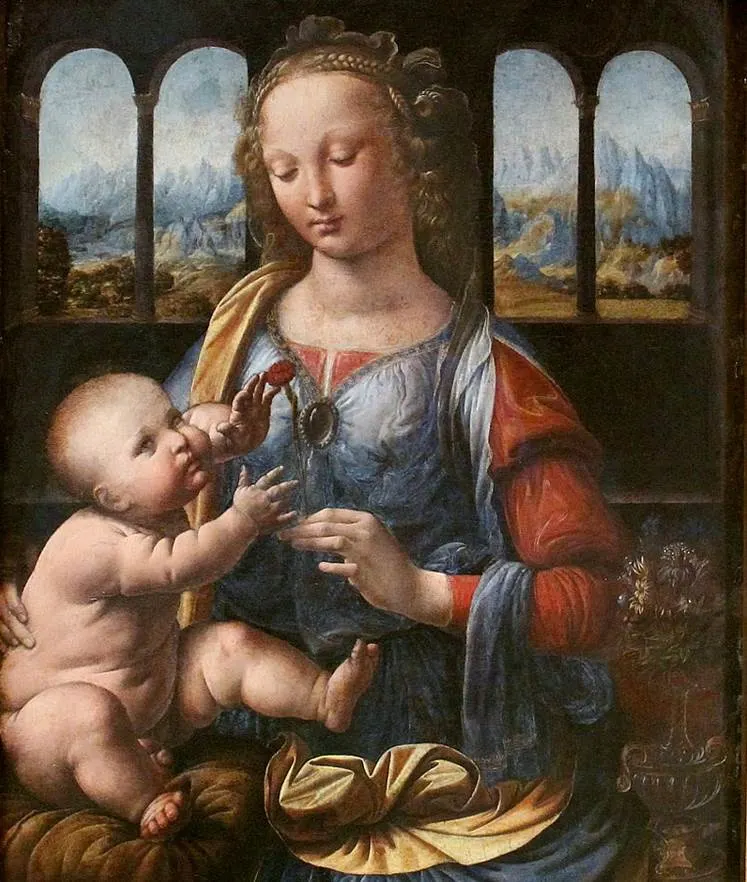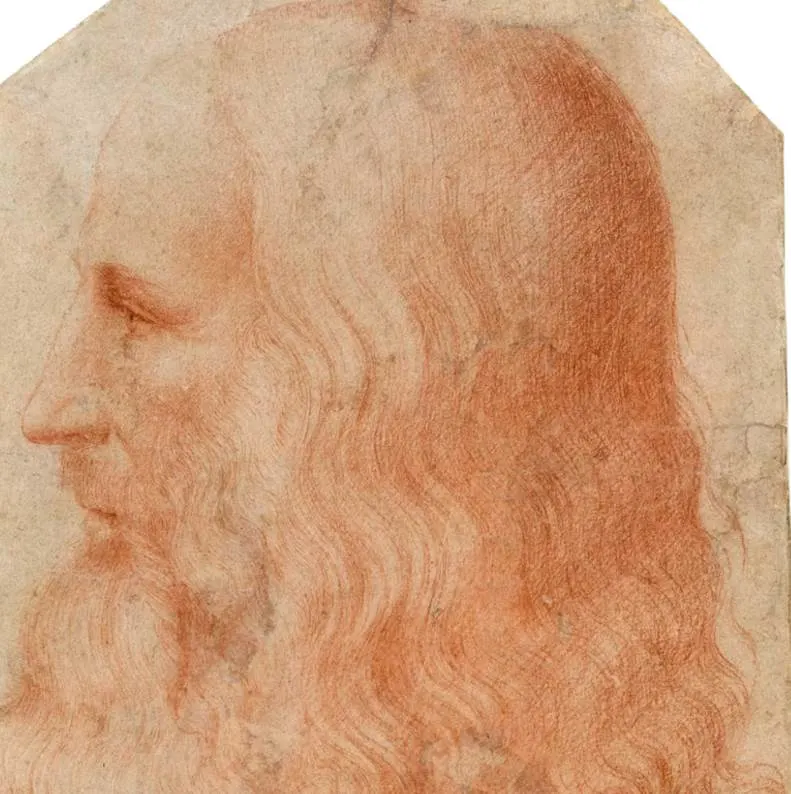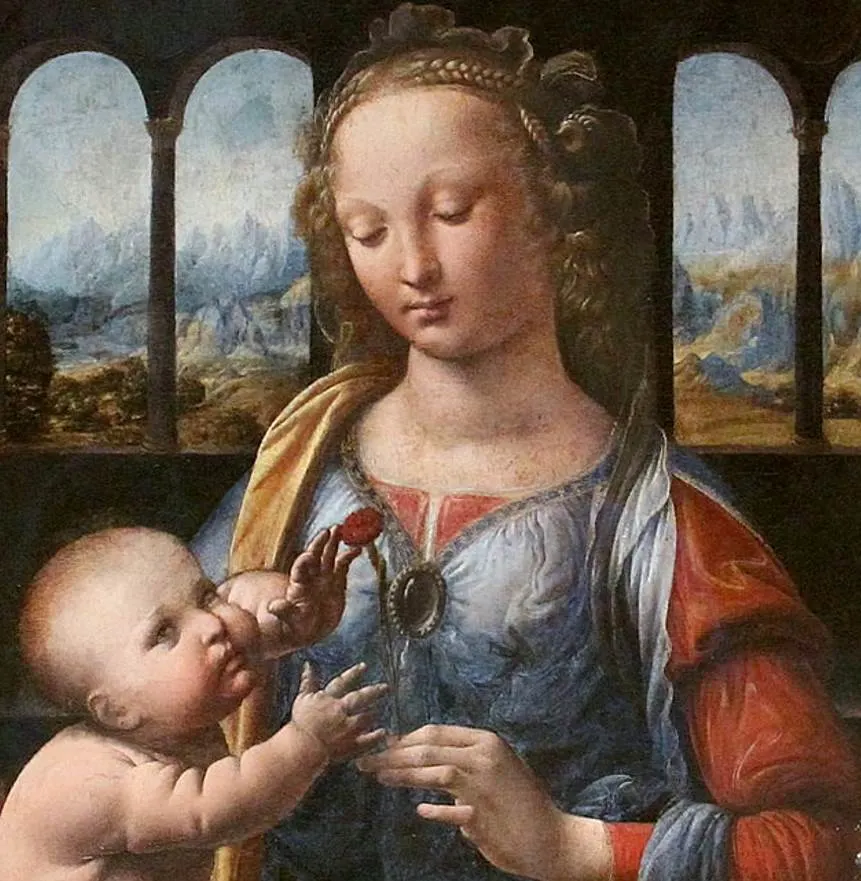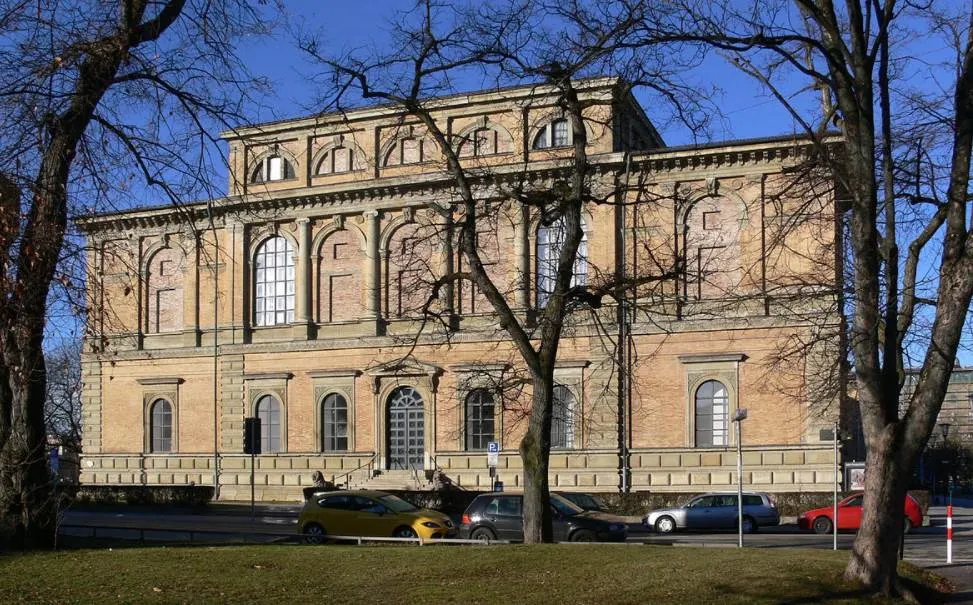Even though the painting style of the Italian polymath Leonardo da Vinci (1452-1519) was quite distinctive, some of the first paintings he created weren’t always correctly attributed to him.
This was also the case with a work called “Madonna of the Carnation,” perhaps not his best-known painting but a remarkable artwork in multiple ways.
1. It was painted when da Vinci was already an independent artist
Even though Leonardo da Vinci ended up becoming one of the most famous artists of the Renaissance, and pretty much in all of history as well, he too had formal training.
He moved with his family to Florence in the mid-1460s and shortly after became a studio boy in the workshop of Andrea del Verrocchio (1435-1488). It quickly became clear, though, that he was more talented in painting than his master who was mainly known as a sculptor.
He started as a trainee by the age of 14 and was considered to be a master by the Guild of Saint Luke, the main guild for artists in the city, by the age of 20 in 1472.
Madonna of the Carnation was created somewhere between 1478 and 1480, shortly before da Vinci moved to Milan to work for Duke Ludovico Sforza.

2. It was originally thought to be a work of his master in Florence
Andrea del Verrocchio’s studio was full of talented apprentices and was therefore considered to be one of the most renowned in Florence. Many of the paintings were created by his students, but many were collaborations between the master and his students as well.
This means that it was sometimes hard to credit both his students and del Verrocchio for the work. An example is a painting called “The Baptism of Christ” (1472-1475), a work that was started by the master but finished by Leonardo who is credited for painting the angel and the landscape.
The same applies to Madonna of the Carnation, which was originally believed to have been a work by del Verrocchio, but which is now positively credited to da Vinci.

3. The woman resembles a figure in one of da Vinci’s earlier works

Art historians agree today that the painting was of the hand of Leonardo da Vinci. Even though the artist already received some independent commissions back then, including an altarpiece for a chapel in the Palazzo Vecchio and a work called “Ginevra de Benci,” little is known about its early history.
The man reason why e can be sure it was by the hand of Leonardo himself is that the hairstyle and drapery that the Virgin wears resemble these elements from his work “Annunciation” which he created somewhere between 1472 and 1475.
4. It depicts the Madonna holding baby Jesus and a flower
So what does “Madonna of the Carnation” really mean?
The title of the painting refers to the carnation, a family of flowering plants known as “Caryophyllaceae.” The Madonna can be seen holding a red carnation which she appears to be presenting to her child.
The naked baby Jesus doesn’t make eye contact with the Virgin and both were painted brightly colored. Jesus sitting on the Virgin’s lap was a popular theme in Christian art back then, dating back to the Middle Ages.
Just about all of the other elements in the painting are covered in subtle darkness. The room isn’t illuminated, even though there are two open windows in the background. The landscape is typical of the ones painted by Leonardo.

5. The carnation and woman’s clothes might have a deeper meaning
The red carnation along with the clothes worn by the Madonna are bright red, something that might allude to the final phase of the life of Jesus Christ.
This means that the mother is predicting the outcome of the life of her son, a period known as the “Passion.” Red in this sense is a reference to blood and the reason why she doesn’t make eye contact with her son. It’s also the reason why the red flower is cast in a shadow.
6. It’s a relatively small but delicate painting
Leonardo didn’t become one of the most renowned artists in history because of paintings that were created on a monumental scale (The last Supper being an exemption to this notion).
Most of his works are subtle and delicate, something especially exemplified by the Mona Lisa Painting, arguably his most famous work.
This painting fits this description as it only has dimensions of 62 × 47.5 centimeters (24 × 18.7 inches). This is even slightly smaller than the Mona Lisa which has dimensions of 77 × 53 centimeters (30 × 21 inches).

7. It’s on permanent display at a famous museum in Munich
So where is Madonna of the Carnation located?
It’s on permanent display at the Alte Pinakothek, the most famous art museum in the German city of Munich. It’s situated in the Kunstareal district of the city, also known as the “Museum Quarter.”
The original museum was built between 1826 and 1836 and was the largest museum in the world back then. It was severely damaged during World War II and completely rebuilt by 1957.
This painting is located in Room IV, a room dedicated to Italian Renaissance paintings, and is joined by works by some of the greatest artists in history from various art movements.

